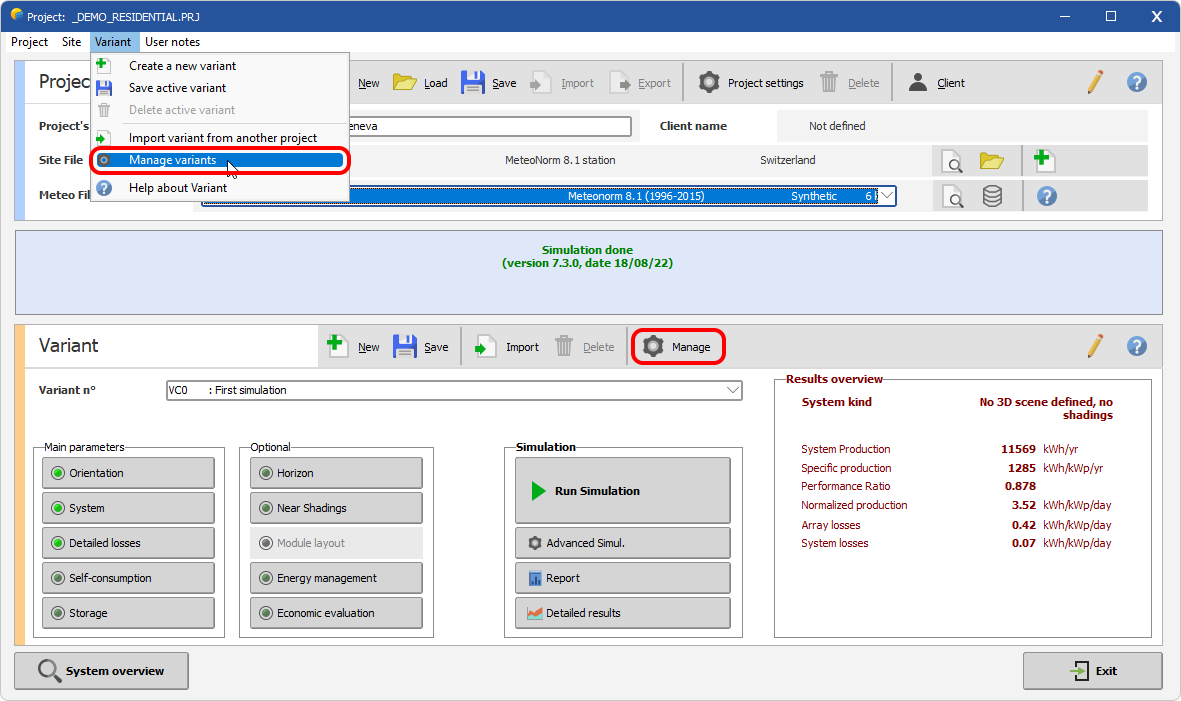|
<< Click to Display Table of Contents >> Variants - System definitions |
  
|
|
<< Click to Display Table of Contents >> Variants - System definitions |
  
|
(Back to Project definition)
The system definitions ("variants" or "calculation versions") are primarily aimed at defining all the PV_system components necessary to fulfil the user's wishes.
In a second step, this part gives the possibility to modify the PV-array specific loss parameters (thermal, wiring resistance, module quality, mismatch, IAM, unavailability, etc) (button "Array losses"). All these parameters are initialised at typical default values so that the first calculation gives a likely "average" results.
In stand-alone and pumping systems, the user's needs definition are absolutely necessary. They closely condition the system design.
For grid systems, these can be defined afterwards in order to obtain the user self-consumed energy part and the energy reinjected into the grid.
In DC-grid systems, especially for public transport, the instantaneous need could be lower than the produced energy at some instants, so that there will be some unused energy.
Parameter definitions are of course different according to system types:
Project is composed of several variants. They can be managed from the variants management dialog box that can be opened by clicking on the menu Variants -> Manage variants or on the button Manage:
